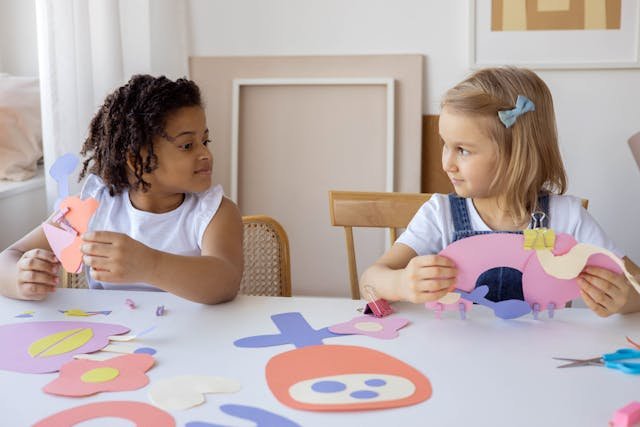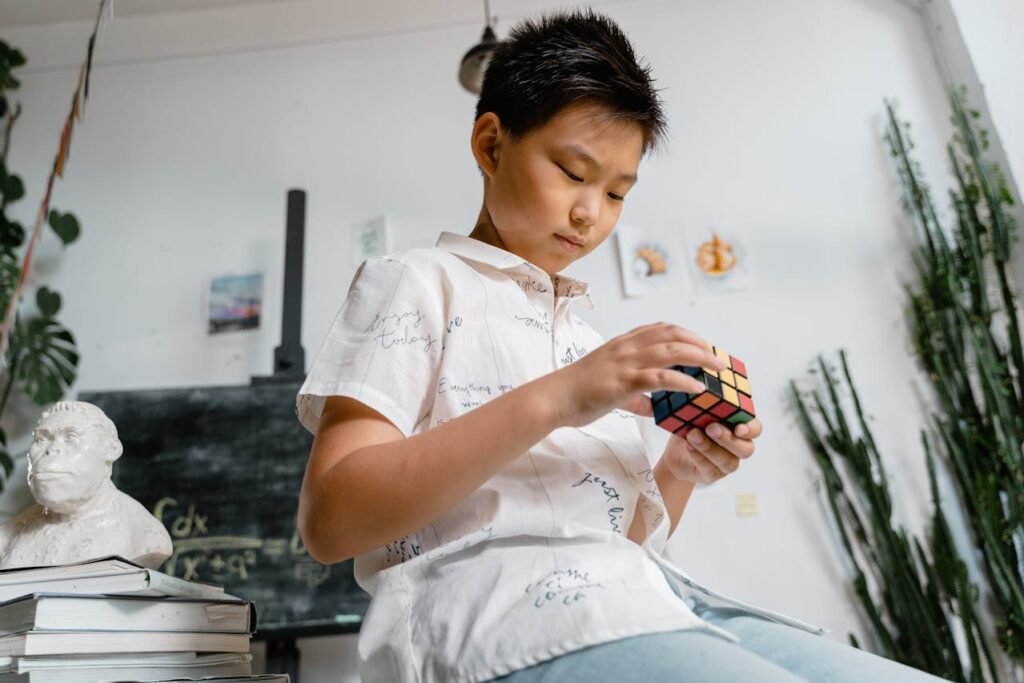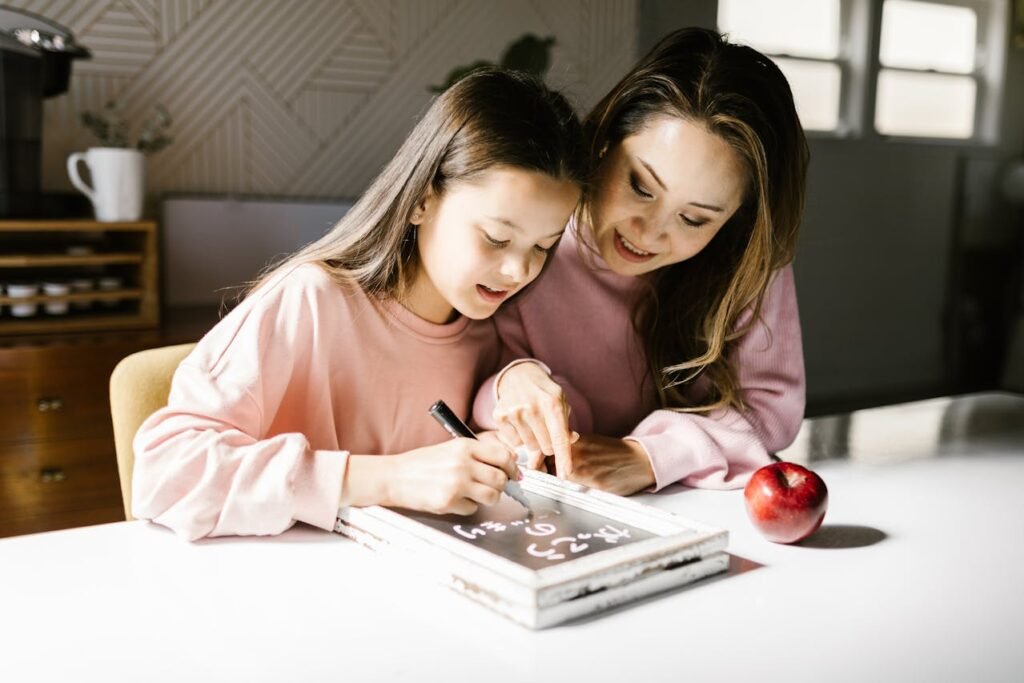When we watch a child take their first steps, we see excitement in their eyes. When they sing a song they’ve just learned, we smile with pride. What we don’t always see is the quiet power behind these moments — memory.
Memory is the brain’s way of holding on to information and using it later. Without memory, a child could not recognize their parents, remember words, or learn from yesterday’s experiences. It is the hidden teacher that supports every step of growth, especially in the early years.
For young children, memory is not just about recalling facts. It’s about building connections, creating understanding, and laying the foundation for learning in school and beyond. The way memory develops in early childhood affects how children think, speak, solve problems, and even how confident they feel about learning.
What Memory Really Is
When people hear the word “memory,” they often think of recalling facts, like remembering multiplication tables or spelling words. But memory is much more than that. Memory is the brain’s way of taking in information, storing it, and using it later when needed.
For a young child, memory shows up in everyday moments. A toddler remembers where their favorite toy is kept. A preschooler recalls the steps of brushing their teeth. A child in early school years uses memory to follow classroom rules or apply what they learned yesterday to today’s lesson.
Without memory, learning would be impossible. Every new skill — from tying shoelaces to reading — relies on the brain’s ability to hold information long enough to practice and build on it.
How Memory Develops in Early Childhood
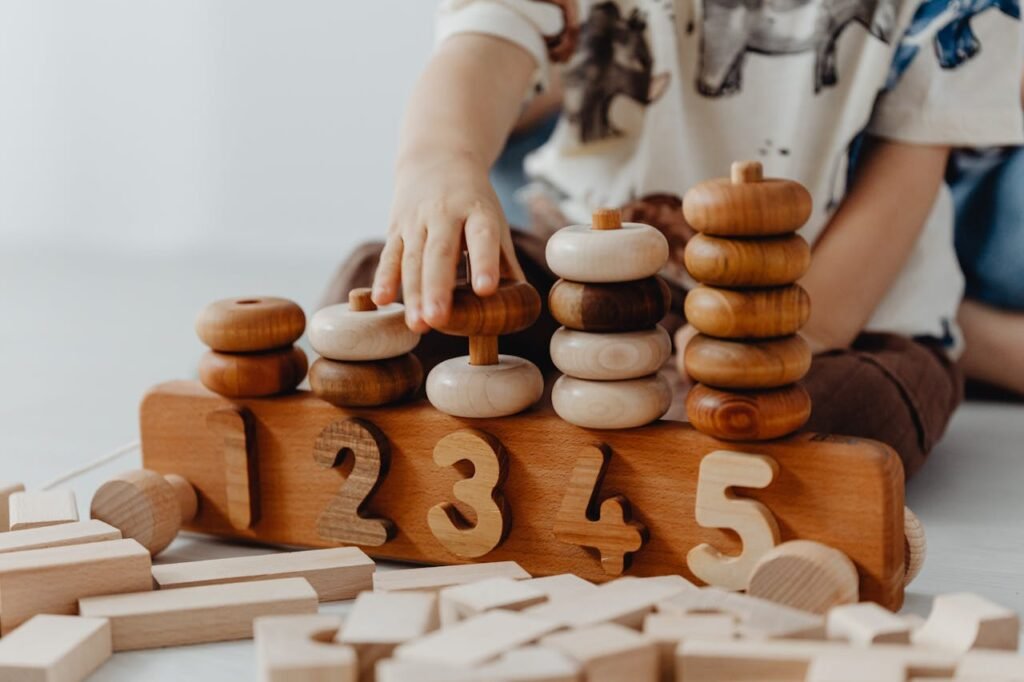
Memory doesn’t appear all at once. It develops step by step, growing stronger as a child’s brain matures.
Infancy: Building First Connections
Even babies show signs of memory. They recognize familiar voices and faces. They notice routines, like feeding times or lullabies. At this stage, memory is short, but it is powerful enough to make babies feel safe and connected to the people around them.
Toddler Years: Remembering and Imitating
By the toddler stage, children begin to remember actions and copy them later. A two-year-old might see a parent sweep the floor and try to imitate it the next day. This is an early sign of memory at work — storing information and using it in new situations.
Preschool Years: Expanding Recall
Preschoolers begin to hold on to more complex information. They can retell parts of a story, remember songs, or recall details from a recent trip. Their memory also supports their growing language skills. As they learn new words, they store them and retrieve them when speaking.
Early School Years: Using Memory for Learning
By the time children enter school, memory becomes more structured. They can remember rules, follow multi-step directions, and start to memorize things intentionally, like spelling lists or math facts. Their brain is learning not just to store information, but to organize it in ways that make sense.
Why Early Memory Matters So Much
The early years are critical for memory because they set the foundation for lifelong learning. When children build strong memory skills, they find it easier to learn new things, solve problems, and make connections. Memory is also tied to confidence — when children can recall information successfully, they feel proud and motivated to keep learning.
At Debsie, we know that memory is not just about repetition. It’s about creating experiences that connect meaningfully with children, so that the information “sticks.” That’s why our lessons combine play, practice, and exploration — all of which strengthen memory in natural ways.
The Different Types of Memory and Their Role in Learning
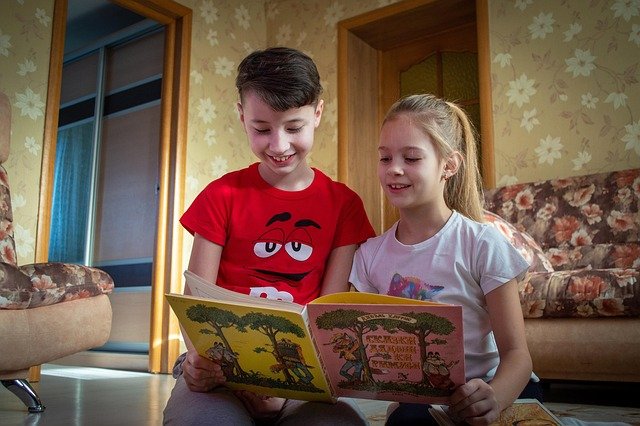
Memory is not just one single system in the brain. It has different parts that work together, each with its own job. For children, these systems are constantly growing, and the way they develop affects how well they learn.
Working Memory: Holding Information in the Moment
Working memory is like a small desk in the brain. It’s the space where children hold on to information while using it. For example, if a teacher says, “Add 5 and 3, then subtract 2,” the child has to hold the numbers in mind long enough to complete the steps.
Working memory is very limited. Young children can only hold a few items at once, and this is why multi-step directions can feel overwhelming. But as children grow, their working memory expands, helping them manage more complex tasks like solving math problems, writing stories, or planning activities.
Short-Term Memory: Storing for a Little While
Short-term memory keeps information for a short period, maybe seconds or minutes. It allows children to remember something they just heard or saw, like a new word, a phone number, or a set of instructions.
For learning, short-term memory is like a temporary holding space. It gives children the chance to practice and repeat until the information moves into long-term storage. Without strong short-term memory, it becomes difficult to transfer knowledge into lasting understanding.
Long-Term Memory: Building Knowledge Over Time
Long-term memory is where information stays for days, months, or even years. It’s like the library of the brain, storing facts, experiences, and skills. When a child remembers how to ride a bike or recalls multiplication tables, they are using long-term memory.
For children in the early years, building long-term memory is key. This is how they collect the building blocks of learning — letters, sounds, words, math facts, and general knowledge. The stronger their long-term memory, the easier it is to connect new information to what they already know.
How These Types Work Together
These three systems don’t work separately. They interact all the time. For example, when a child reads a story:
- Working memory helps them hold the words in mind as they move from one sentence to the next.
- Short-term memory helps them recall what happened on the previous page.
- Long-term memory helps them recognize familiar words and connect the story to what they already know.
If one system is weak, learning becomes harder. A child with poor working memory may lose track of steps in math. A child with weak short-term memory may struggle to recall spelling words. But when all systems are supported, learning flows more smoothly.
At Debsie, our teachers design lessons to exercise all three types of memory. We give children tasks that stretch their working memory, repeat concepts to strengthen short-term memory, and connect learning to real-life experiences so that it settles into long-term memory.
How Memory Supports Key Areas of Learning
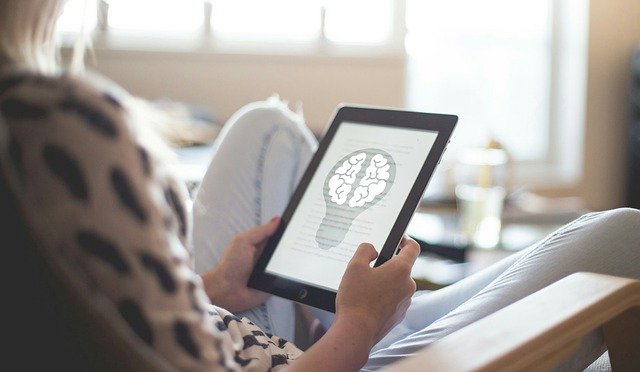
Memory is like the invisible thread that ties all learning together. Without it, lessons would vanish as quickly as they arrive. In the early years, memory plays a vital role across every subject, shaping how children build skills and connect ideas.
Memory and Reading
Reading is one of the clearest examples of how memory drives learning. When a child reads, they must recall the sounds that letters make, remember words they’ve seen before, and hold sentences in mind long enough to understand their meaning.
Working memory helps children track the flow of a story. Short-term memory helps them recall the sentence they just read. Long-term memory stores vocabulary, grammar, and comprehension skills. The stronger these memory systems are, the more fluent and confident children become in reading.
Memory and Math
Math also depends heavily on memory. Children use working memory to follow multi-step problems. They rely on short-term memory to keep numbers in mind as they calculate. And they store math facts — like addition tables or multiplication — in long-term memory so they can solve problems quickly.
When a child struggles with memory, math can feel especially frustrating. They may forget steps, lose track of numbers, or take longer to recall basic facts. With practice, repetition, and memory-friendly strategies, however, they can build a stronger foundation.
Memory and Problem-Solving
Problem-solving goes beyond facts. It requires children to recall what they know, apply it to a new situation, and hold multiple ideas in mind at once. Whether they are building with blocks, planning how to share toys, or experimenting in science, memory gives them the tools to think ahead and make connections.
For example, when solving a puzzle, a child must remember which pieces they’ve already tried and recall the shape of the missing piece. This process builds persistence, logical thinking, and flexibility — all supported by memory.
Memory and Creativity
Even creativity is linked to memory. When a child draws, writes, or invents a story, they are pulling from past experiences stored in long-term memory. Working memory helps them organize ideas, while short-term memory keeps their thoughts flowing as they create.
This is why memory is not just about academics. It fuels imagination, expression, and the ability to combine old ideas into something new.
Memory as the Foundation of Confidence
Perhaps most importantly, memory gives children a sense of achievement. When they remember a word they’ve practiced or recall a math strategy to solve a problem, they feel capable and proud. This confidence motivates them to keep learning, creating a positive cycle where memory and motivation strengthen each other.
At Debsie, we design every lesson to not only teach content but also strengthen memory across subjects. We know that when memory is nurtured, children don’t just learn — they thrive.
What Affects Memory in Young Children
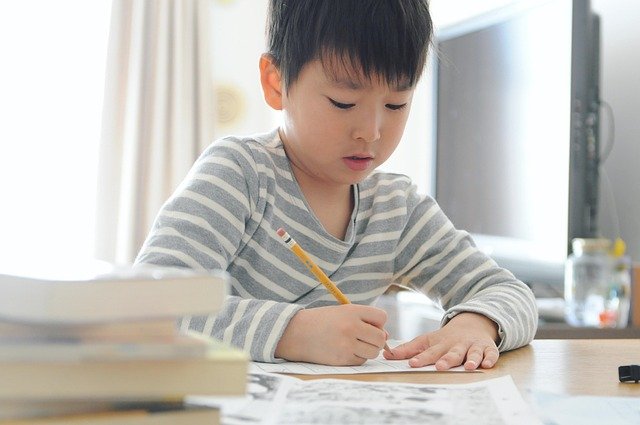
Memory does not grow in isolation. It is influenced by many parts of a child’s daily life — from how well they sleep to how safe they feel. When these factors are balanced, memory becomes sharper and learning feels easier. When they are not, children may struggle to hold on to what they learn.
Sleep: The Brain’s Reset Button
Sleep is one of the most powerful tools for memory. During sleep, the brain processes what a child has learned that day and stores it in long-term memory. Without enough sleep, this process is interrupted.
A tired child may appear forgetful or distracted, not because they don’t understand, but because their brain has not had the rest it needs to strengthen connections. Regular bedtimes and calming bedtime routines are simple ways to protect memory.
Nutrition: Fuel for the Brain
The brain needs energy to store and retrieve information. Healthy meals with proteins, fruits, vegetables, and whole grains give children the steady energy they need.
On the other hand, sugary snacks and irregular eating can cause quick spikes and crashes in energy, making it harder for the brain to focus or remember. Even hydration plays a role. A dehydrated brain tires quickly and struggles to concentrate.
Emotions: The Hidden Key to Memory
Memory and emotion are deeply connected. Children remember best when learning is linked to positive feelings — joy, excitement, pride. A child who laughs while learning a new song will likely remember it better than something learned under stress.
Stress and fear, on the other hand, can block memory. When children feel anxious, their brain’s focus shifts to coping, leaving little space for storing new information. That’s why emotional safety is just as important as academic support in learning environments.
Environment: A Space for Focus
The setting where children learn also shapes memory. A noisy or chaotic environment can make it harder for them to concentrate and recall information. A calm, organized space helps the brain focus and store knowledge more effectively.
This doesn’t mean learning must happen in silence. Children learn well in environments filled with play, movement, and interaction. What matters most is balance — enough structure to reduce distractions, and enough freedom to spark curiosity.
Why These Factors Matter Together
Each of these factors — sleep, nutrition, emotions, and environment — works together to shape how well memory develops. A well-rested, well-fed child in a safe, supportive environment is far more likely to remember and apply what they learn.
At Debsie, we encourage parents to think of learning as more than just lessons. It’s also about building healthy routines, offering emotional support, and creating spaces where children feel calm and curious. When memory is nurtured this way, learning becomes not just easier, but more joyful.
How to Strengthen Memory in Daily Life
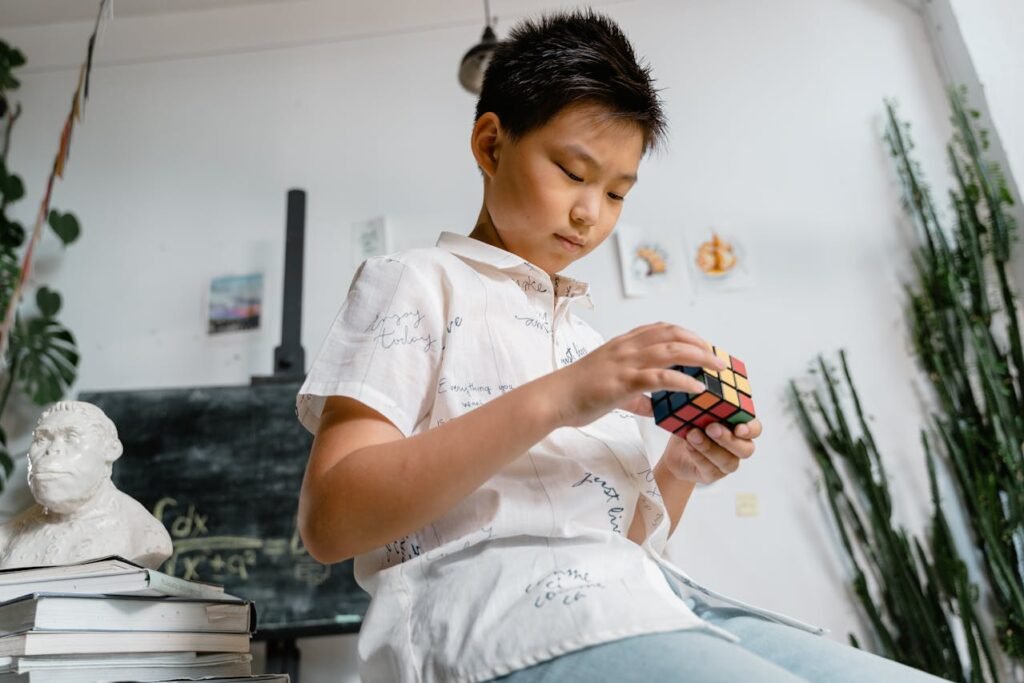
Memory is not something children are either “good” or “bad” at. It’s a skill that can be trained and strengthened with practice. Parents and teachers can build memory in simple ways that fit into everyday routines, turning ordinary moments into powerful opportunities for growth.
Repetition With Variety
Children remember best when they practice often, but repetition doesn’t have to feel boring. A child learning new vocabulary might first read the words in a story, then sing them in a song, and later use them in a drawing. Each time they meet the same information in a different way, the memory grows stronger.
This kind of varied repetition makes learning feel fun while strengthening both short-term and long-term memory.
Connecting New Ideas to Old Ones
One of the most effective ways to build memory is to link new knowledge to what a child already knows. For example, if a child is learning about the water cycle, you can connect it to their own experience of watching rain fall, puddles dry, or steam rise from hot food.
These personal connections act like hooks, making the new idea easier to store and recall.
Using Play and Hands-On Activities
Children’s brains remember better when the body is involved. Games, experiments, and creative projects allow them to use memory in action. For example, building a model of the solar system helps children remember planet names more effectively than just reading them on a page.
Play keeps the brain engaged and turns memory into an active, joyful process.
Encouraging Storytelling and Teaching Back
When children explain something in their own words, they strengthen their memory of it. This can be as simple as asking, “Can you tell me what you learned today?” or encouraging them to “teach” a sibling or parent.
Storytelling and teaching back help children organize information in their minds, turning loose facts into a clear structure they can recall later.
Creating Routines and Cues
The brain loves patterns. Daily routines and consistent cues make it easier for children to remember. A child who always reviews spelling words before bedtime will find the habit sticks. A simple song or rhyme can also act as a cue, helping recall during class or exams.
At Debsie, our teachers often use rhythms, chants, and structured routines to anchor memory in a way that feels natural for children.
Confidence Builds Memory Too
When children succeed at remembering and using knowledge, their confidence grows. That confidence makes them more eager to keep learning, which in turn strengthens memory further. It becomes a positive cycle of growth.
Parents and teachers can support this by celebrating effort and progress — not just perfect recall. A simple, “I’m proud you remembered most of that story!” can motivate a child to keep trying.
How Debsie Supports Memory Development
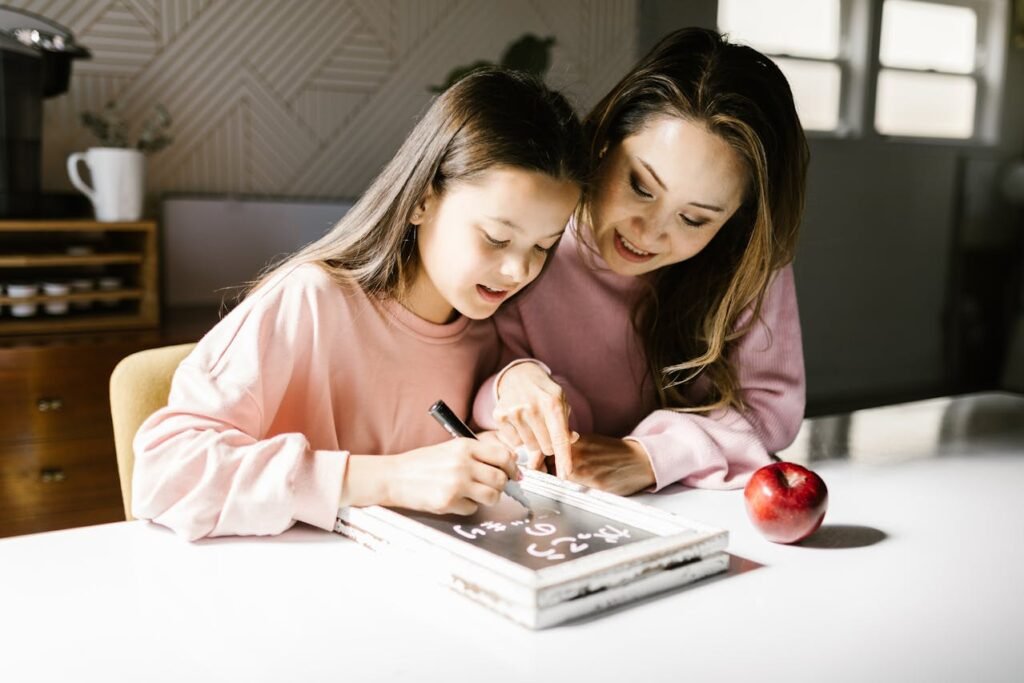
At Debsie, we believe memory is not just about memorizing facts. It’s about building deep understanding that children can use in new situations. That’s why our approach is designed to help children strengthen memory step by step — through lessons that are interactive, meaningful, and fun.
Active Learning That Sticks
We know children remember best when they are actively involved. Instead of simply listening, our students solve problems, create projects, and explore real-life examples. A child learning about fractions might cut fruit into pieces or use blocks to represent numbers. These hands-on activities strengthen memory by engaging multiple senses at once.
Repetition With Purpose
At Debsie, we don’t believe in boring drills. Instead, we weave repetition into playful challenges and varied activities. For example, when practicing new vocabulary, children may read the words, use them in a story, and act them out in a game. Each repetition reinforces memory without feeling repetitive.
This approach ensures that knowledge is not just memorized for a test but stored in long-term memory for future use.
Linking Learning Across Subjects
One powerful way we strengthen memory is by connecting subjects. A history lesson may tie into geography, or a science topic may be linked to math. When children see how knowledge fits together, their brain forms stronger memory networks.
For example, a child studying rivers in geography might also calculate water flow in math or write a creative story about a river journey. These cross-connections make memory more durable and meaningful.
Safe and Supportive Classrooms
Memory grows best in environments where children feel calm and confident. At Debsie, we create safe classrooms where mistakes are treated as learning steps. When children are not afraid of getting things wrong, they are more willing to recall and apply what they know.
This emotional safety reduces stress — a major block to memory — and encourages children to keep trying until the knowledge “sticks.”
Personalized Learning Paths
Every child’s memory develops at a different pace. Some may need extra time with math facts, while others quickly store and retrieve them. Our partner teachers adapt lessons to meet each child where they are.
By offering the right level of challenge, we keep memory engaged without overwhelming it. Over time, this personalized support helps every child strengthen their ability to recall and apply knowledge confidently.
Memory as a Lifelong Skill
At Debsie, we see memory as more than an academic tool. It’s a lifelong skill. Whether children are learning a new language, preparing for exams, or exploring creative arts, strong memory helps them succeed. By teaching in ways that make learning stick, we prepare children not just for school, but for life.
Conclusion: Memory, the Bridge to Lifelong Learning
Memory is more than remembering facts for a test. It is the bridge that connects yesterday’s learning to today’s understanding and tomorrow’s success. In the early years, memory shapes how children learn to read, solve problems, build confidence, and express creativity. It is the quiet foundation under every lesson, every discovery, and every new skill.
Science shows us that memory can be strengthened with the right support. Sleep, nutrition, emotions, and environment all play vital roles. Repetition, play, storytelling, and connection to real life make information “stick.” And most importantly, encouragement and confidence help children use their memory with pride instead of fear.
At Debsie, we make memory-building a natural part of every lesson. Through active learning, personalized support, and a safe classroom culture, we help children not only remember but also understand and apply knowledge in powerful ways. We see every day that when memory is nurtured, children don’t just study better — they thrive.
For parents, the takeaway is simple: your child’s memory is not fixed. It grows with practice, with love, and with opportunity. By creating supportive routines at home and choosing learning environments that celebrate effort, you can give your child one of the greatest gifts — the ability to carry knowledge confidently into every stage of life.
👉 Book a free trial class with Debsie today and see how we make learning stick, turning memory into a joyful tool for growth.
Read Next:

